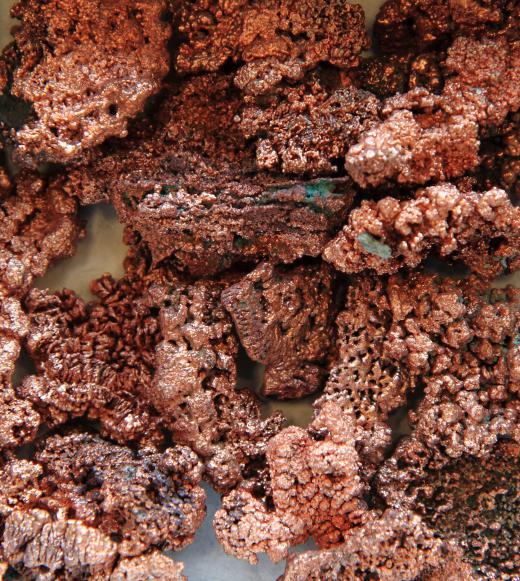Surface mining is a method of mining used to extract minerals and metals which are near the surface of the Earth. There are three basic types of surface mining: open pit mining, strip mining, and quarry mining. These methods are much more economical than underground mining, yet they can have a more significant impact on the surrounding environment unless efforts are taken to reclaim the land.
Open pit mining involves excavation which looks like a terrace. Cuts are made into the ground, and the area at that depth is worked around the circumference of the mine. Once the minerals and waste have been removed from the ledge, called a bench, the excavation moves down a level and work begins again. This type of surface mining, also known as hard rock mining, is typically employed to extract metal ores, like copper, gold, iron, and aluminum, and other minerals.

Strip mining is a form of surface mining that is primarily used for coal excavation. The rock and dirt covering the ore is removed one strip at a time. Once the ore has been taken from the first strip, a second strip is cut next to it, and the waste from the second strip is used to back fill the first. This goes on until the ore is exhausted, and then the waste from the first strip is used to fill in the last.

Sand, gravel, clay, granite, and other materials used in building are mined in quarries. This type of mining begins by blasting into rock in a manner to create the greatest fracturing. Rocks are further reduced by crushing machines and separated according to size. Mining ornamental stone does not blast the rock, but employs a method called broaching, which uses wedges placed into holes rather than explosives. The wedges are hammered into the holes until the stone breaks off.

Surface mining can be an inexpensive and relatively safe method of reaching much needed resources. The damage caused to the environment if the mine is not reclaimed, however, can be quite significant. Some of the problems faced in areas with abandoned mines include polluted surface and ground water, sediment clogged streams, landslides, fumes, and unstable ground.

In the United States, the Surface Mining Control and Reclamation Act established the Office of Surface Mining Reclamation and Enforcement (OSMRE) as a bureau in the Department of Interior to oversee reclamation of surface mines. The primary focus in on coal mining, and the OSMRE is charged with ensuring that mining is conducted in an environmentally responsible manner and that the land is reclaimed during and after the mining process. To achieve this, they have the authority to deny mining rights in areas where reclamation is not feasible.

In the UK, which has a much longer history of surface mining than the US, reclamation is a required part of the mining process as well. In many cases, strip mining has occurred in areas of unusable land, and the reclamation process has not only restored, but improved the soil. Reclaimed land in Britain is used for farming, housing developments, parks, golf courses, and many other projects which meet local needs.
